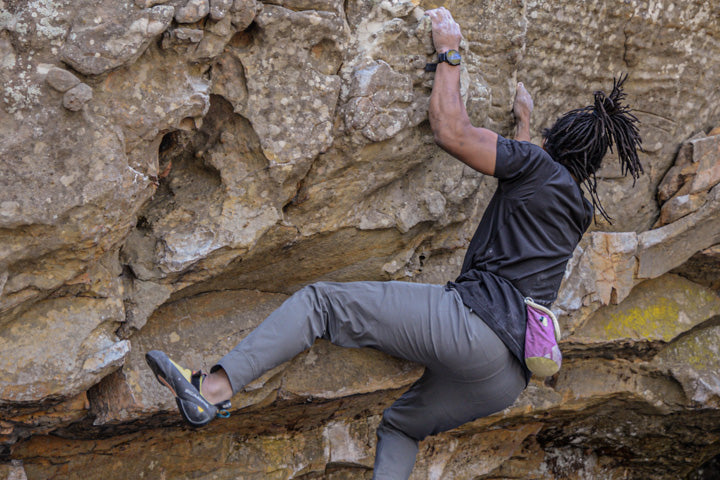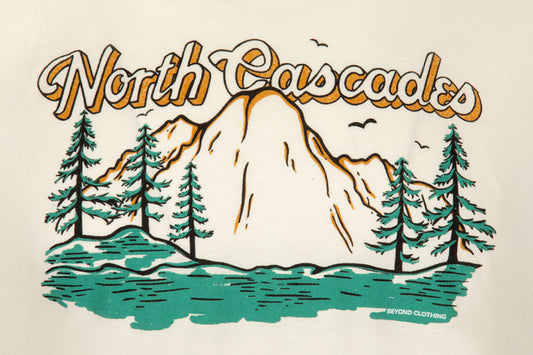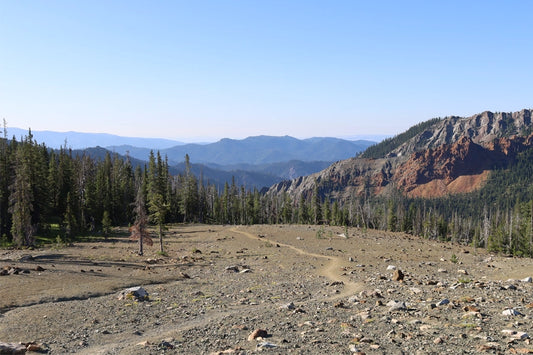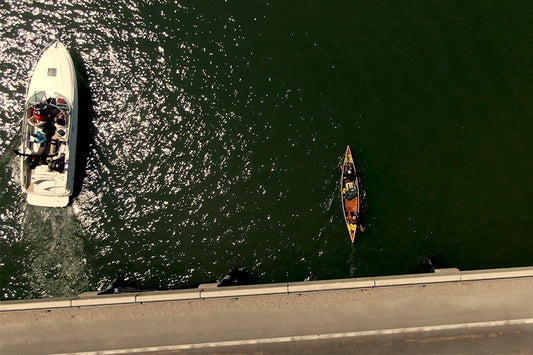Whether transitioning out of the gym or looking to take that first climb ever, beginners of outdoor bouldering have a lot to think about before sizing up that first rock. Oversights can range from inconvenient to downright dangerous, and as with any sojourn into wild places, planning is key. We sat down with professional climbing coach and BEYOND friend Mario Stanley to pick his brain for common mistakes made by new boulderers.
Quotes have been edited and condensed for clarity

Mistake #1: Not Doing Your Clothing Homework
Outdoor bouldering is more than just a t-shirt with a pair of jeans or shorts. Whenever you’re entering wild places, you’d be well-advised to layer accordingly. Part of that comes down to choosing gear appropriate to the environment and season you’ll be bouldering in: go with pants over shorts if you’ll be navigating a lot of rough foliage on your way to the site, choose something warm if you’re climbing in cold weather, and so on. But it also applies to the climb itself. “Unless it’s in the middle of the summer, you actually need to consider keeping your body warm between attempts,” Mario shares. “Your downtime in between might be like 15-20 minutes. I generally set a timer for no more than three minutes, because after that the body is legitimately getting cold.” Mario recommends choosing a good baselayer or puffy jacket to maintain warmth in the upper body (“It’s easier to warm up your legs,” he clarifies).
Mistake #2: Overlooking Your Crash Pad
Bouldering is a rope-free form of climbing, but that doesn’t mean safety-free. One of the first considerations you’ll need to make before starting outdoor bouldering is your crash pad, a portable pad that catches you should you, well, crash. If you’re climbing with a guiding company, check with them in advance; you may be able to rent a pad. If you’re buying one, do so with some deliberation. “Buy a crash pad from a reputable, well-known climbing company,” Mario advises, “I recommend Organic Climbing. I’ve been using them for 10 years, and one of the reasons I like their stuff is that you can get custom colors for your crash pad. When you’re going to a climbing destination, people often show up with pads that look exactly the same. Then they accidentally go home with the wrong gear. All my pads are rainbow colors, taken from the LGBTQ+ flag that was upgraded with black, brown, and a different color of yellow to incorporate all ethnic groups. It signifies that I’m in solidarity with everybody, and it’s undeniable which stuff is mine.”

Mistake #3: Treating Wild Places Like Your Personal Playground
When it comes to boulderers that are poor stewards of wild places, Mario doesn’t mince words: “Bad environmental impact is really a result of two things: pure laziness and selfishness.” Laziness encompasses, among other things, a lack of situational awareness: things like littering, grinding down the soil, or trampling vegetation (“Some cacti take decades to grow,” Mario adds). For selfishness, one of the biggest (and most overlooked) culprits is blasting loud music. “It’s really, really, really disruptive to the ecosystem. It’s also a personal safety hazard,” Mario continues. “One time someone I was climbing with had their music super loud and didn’t really turn it down when I asked them to. I couldn’t hear the hornets’ nest that I was climbing near, and I ended up getting stung. When we turned off the music you could hear them buzzing around; they were pissed.” And that’s far from the worst possible outcome. “This has probably happened twice,” Mario recalls, “I walked up, turned a guy’s speaker off, and then all of a sudden you could hear a rattlesnake nearby.”
Mistake #4: Poorly Packing Your Bag
If you’re accustomed to indoor bouldering, expect your bag to be much lighter once you start climbing outdoors. At the gym you have access to a restroom, to your car, to food nearby. In the wild, everything you need is going to be in your bag. “When you’re packing your bag, lay everything out on top of your bed so you can see it,” Mario says. “Then try to get rid of half of that. It’s usually stuff that you want and not that you need, and it all needs to fit into one bag, comfortably.” Making a checklist is an excellent way to rank and measure what you’ll need and how much; supplies for hygiene, medical, food, water, bags for waste, and so on. Then go back to your checklist after the trip and review what did and didn’t get used; over time, you’ll get a better sense of what to pack. For starting tips, Mario recommends taking more food and water than you think you’ll need, to test your packed bag’s carrying comfort before you head out, and to carry the bag on your front so you can sling your crash pad over your back.

Mistake #5: Forging Ahead Without a Plan
“Look before you leap” is a time-tested adage for a reason, and it applies in more ways than one when it comes to bouldering. “The most common mistake for boulderers is they’re so concerned with getting to the top of the boulder that they don’t know how to get back down,” Mario tells us, “People do not know how to get back down to the ground safely. Number one problem I run into.” Another thing that gets overlooked? Parking your car, before the climb even starts. Climbers block in other climbers far too often, which means someone trying to leave has a lot of searching to do. It’s also a good practice to record the GPS coordinates of where you parked. “If I have service, I’ll open up Google Maps and screenshot my GPS coordinates. So if I do call 911, at a bare minimum I can say, ‘I don’t know exactly where I am, but here are the GPS coordinates of my car, and I walked up the trail for about an hour and took four right turns.’ That’s enough for a helicopter to find you.” And above all else, plan before you even get in the car. Research not just where you’ll be going, but the season and time of day.






0 Comments